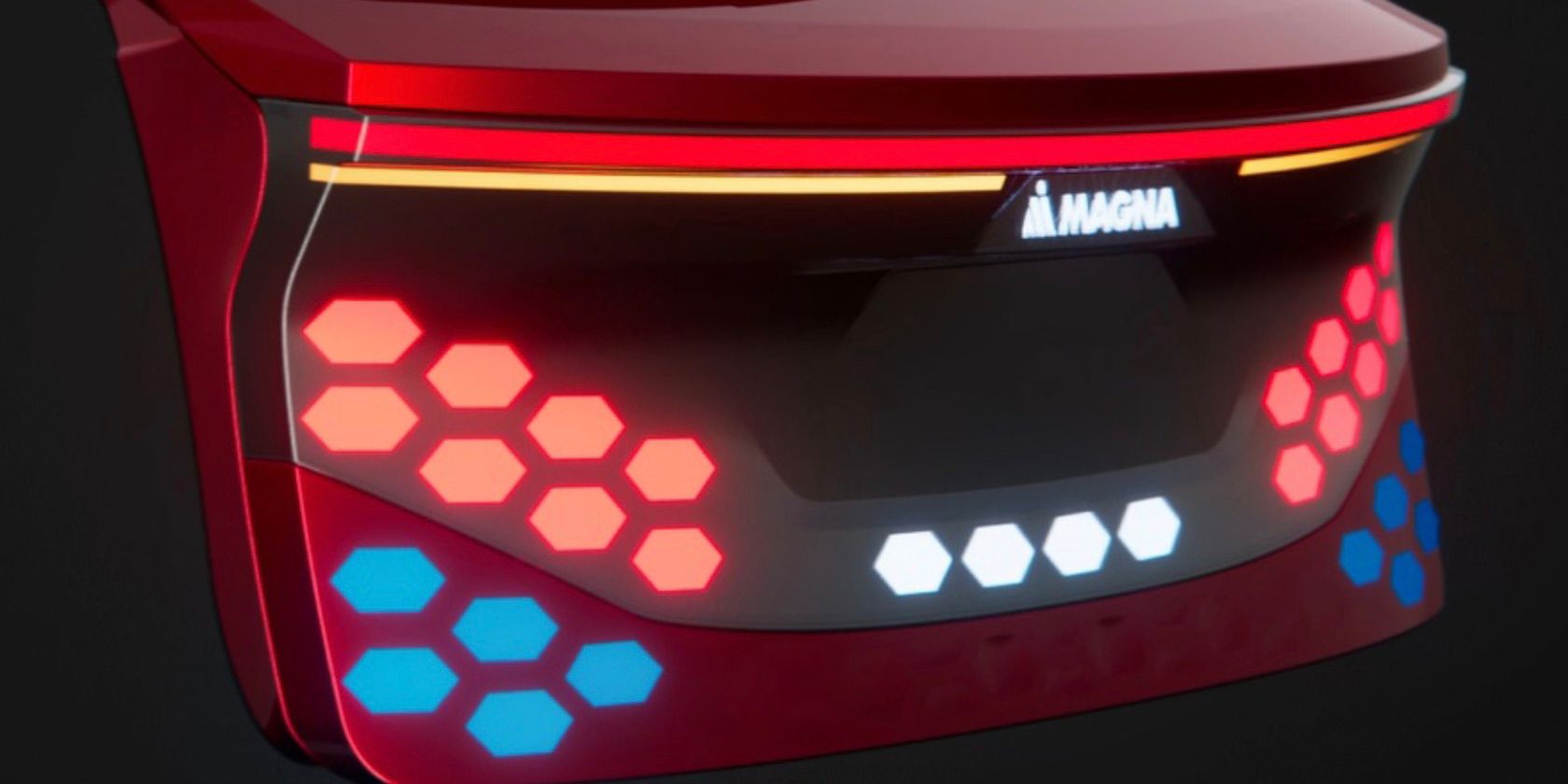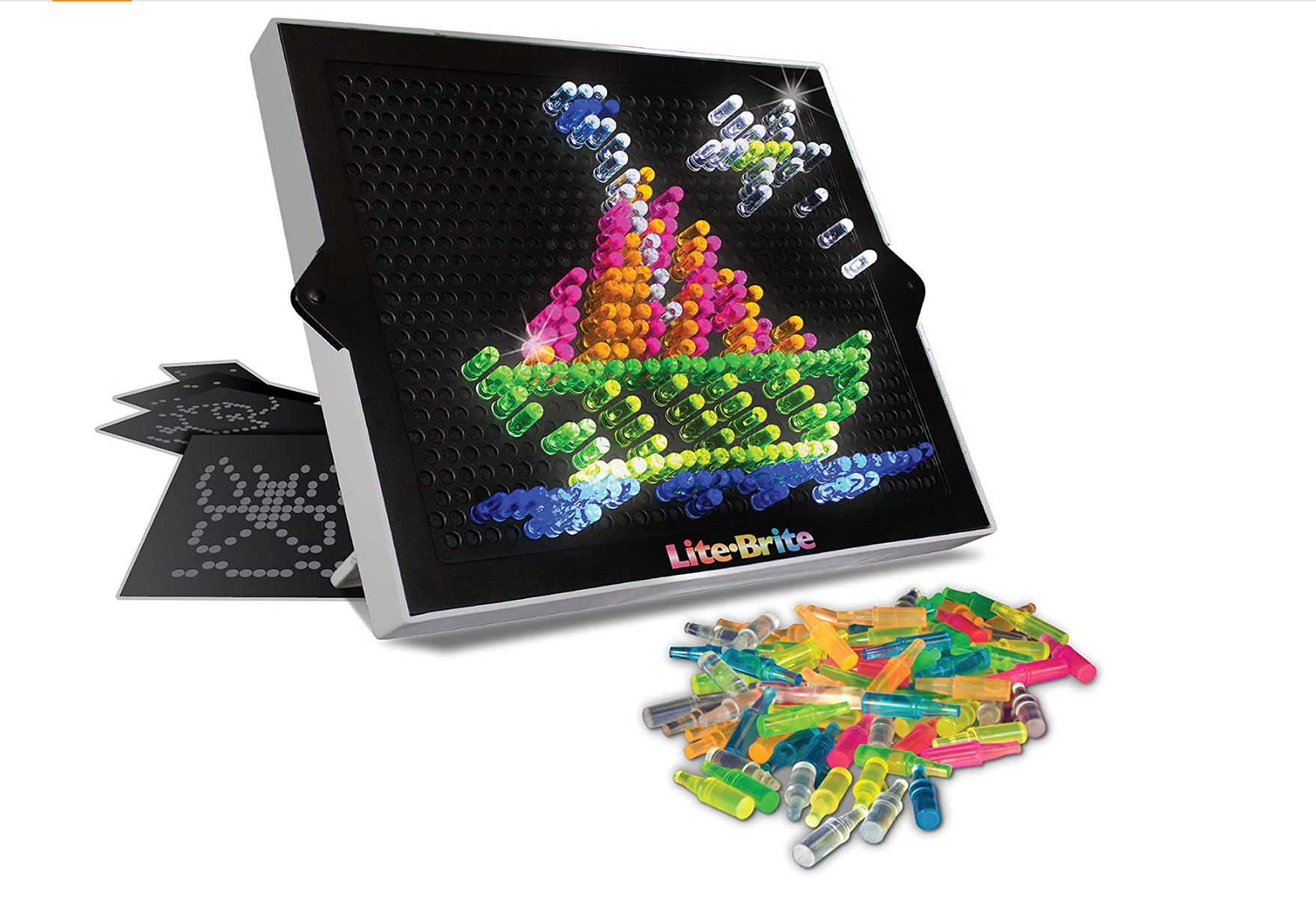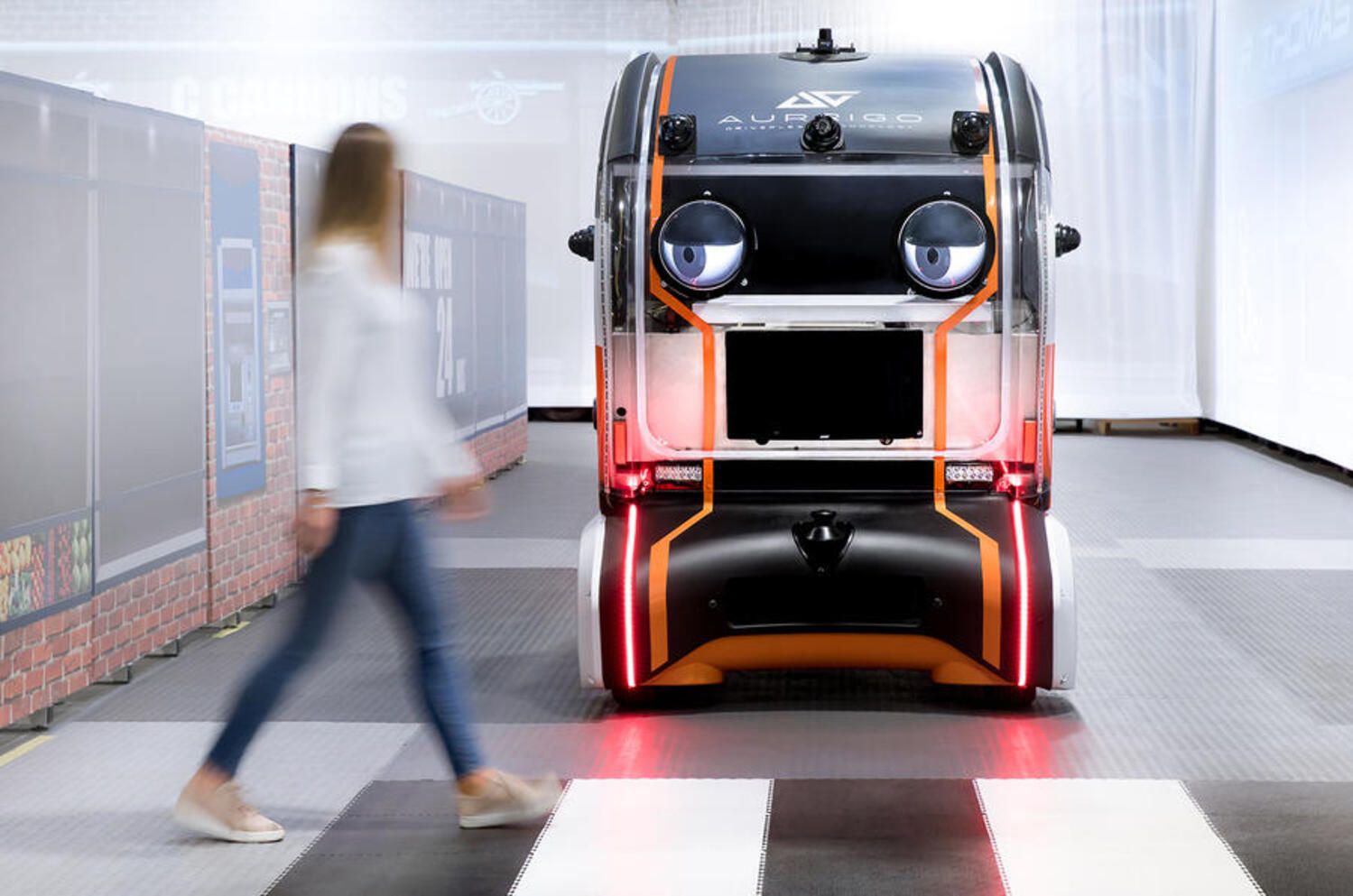Magna is a large Tier 1 automotive supplier that's invented an exciting new light technology for cars: Breakthrough Lighting.
Besides its visual appeal and customizability, this technology promises to help self-driving cars communicate with pedestrians.
But what is Breakthrough Lighting, and how does it work?
What Is Breakthrough Lighting?
Breakthrough Lighting allows lights to seemingly magically appear on a dark surface. Though the Magna Press Release focuses on the rear of the vehicle, this technology could be applied to any physically compatible surface.
Picture the typical rear directional lights and tail lights in a car. They're either on or off in a fixed pattern or capable of appearing to move, like a dynamic turn signal.
You've probably seen dynamic turn signals, when lights flash individually from center to outside, to either the left or right, depending on which way the vehicle is turning. Numerous vehicles feature dynamic turn signals.
Breakthrough Lighting is different in that it allows for far more expression.
How Does Breakthrough Lighting Work?
Breakthrough Lighting relies on what is called a "hidden-until-lit" design. Magna achieves this using a process known as laser ablation.
Laser ablation has many industrial applications, but in this context, you can think of laser ablation as blasting a giant number of microscopic holes into a surface. Placed over a light, these tiny holes allow light to selectively shine through a material. Here's an analogy that may help.
If you've ever played with a classic Lite-Brite, you'll recall how all the little lights are illuminated until you insert a design template. This template black out the lights that are not part of the design and allows you to fill in the empty spaces of the design with pegs of your color choice.
You can think of this technology as a programmable Lite-Brite in reverse. Instead of all the lights starting on, they start off and can be programmed to determine their illumination pattern and coloring. Though this analogy does no justice to the complex engineering behind Breakthrough Lighting, it does help you to appreciate how simple design ideas can appear in different forms across time.
Magna refers to the rear deck as the "Litgate."
What Does Breakthrough Lighting Look Like?
While beauty is in the eye of the beholder, Breakthrough Lights offer the potential for beautiful light shows. Automakers use lights to communicate the personality of their brands, with many focusing on the brands with the most eye-catching headlights.
The best way to see Breakthrough Lighting is to watch it in action.
Concerns & Hopes For Magna Litgate
If you get rear-ended, it will likely destroy the thermoplastic material that enables Breakthrough Lighting. Unlike regular tail lights, they may require more extensive replacement and repair. How much this will cost and how it will be implemented remains to be seen.
On the other hand, Grahame Burrow, Global President of Magna Exteriors, said, "Magna's Breakthrough Lighting enables increased design freedom and features more options for brand differentiation that can elevate our customers' experiences."
Communication
The same technology Magna uses for its Litgate could be applied to other vehicle parts. Though no one can accurately predict the timing, autonomous vehicles are coming. This means society must invent and accept a new form of communication. Right now, people interact with signs where various light colors and states (flashing, solid) tell them how to obey the laws of the road.
Autonomous driving requires human-av communication. For example, pedestrians will want to be sure that an AV has "seen" them. Jaguar Land Rover is taking a very literal approach to this, creating vehicles that make eye contact and let someone know it's safe to cross.
Though these cartoonish eyes are cute, it remains to be seen if this will become the accepted way people and AVs talk to one another. Breakthrough Lighting could also be used.
A vehicle could display an illuminated message or symbol to let pedestrians know they have been recognized. Coupled with cameras, the human could also communicate that they are going to cross with a universal gesture. Otherwise, someone texting on their phone could theoretically delay an AV until, well, whenever they looked up and became aware of their surrounding. While it's fun to think about the car rolling its eyes, the reality of developing time-efficient human-AV interaction standards is coming.
We'll have Breakthrough Lighting before that need arises.
When Will Breakthrough Lighting Be Available?
While we're currently still thinking about automotive lighting in terms of evaluating LED, halogen, or LED, that may soon change. 2023 is the target production date per Magna. However, given that we live in a time of supply chain uncertainty, it would be forgivable if there were delays.
The Future Is Breakthrough Lighting
Though beautiful, Breakthrough Lightning will allow for capabilities beyond the aesthetic. As we enter a new age of mobility, it may help us on our journey of bi-directional human-vehicle communication.



